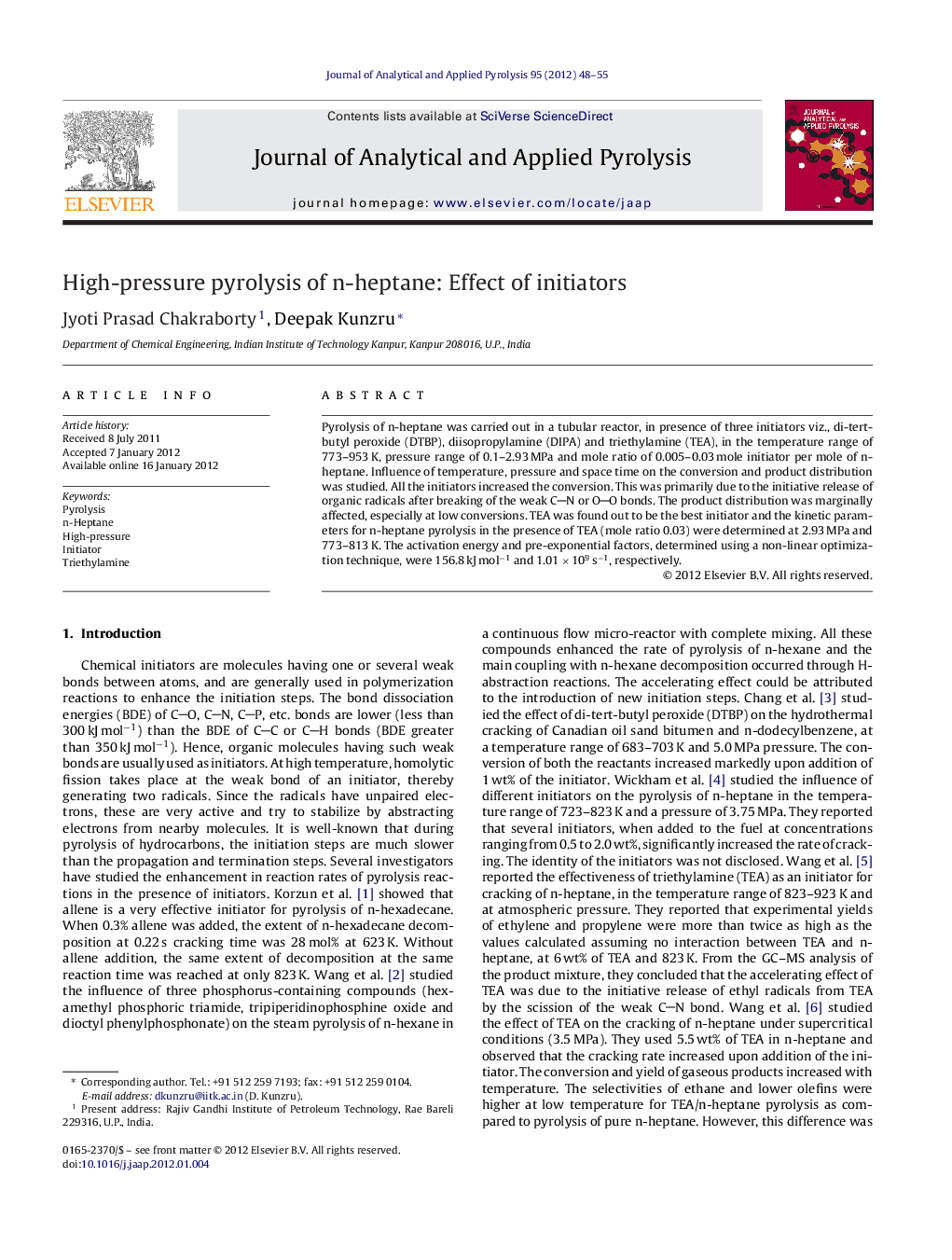| کد مقاله | کد نشریه | سال انتشار | مقاله انگلیسی | نسخه تمام متن |
|---|---|---|---|---|
| 1197382 | 1492982 | 2012 | 8 صفحه PDF | دانلود رایگان |

Pyrolysis of n-heptane was carried out in a tubular reactor, in presence of three initiators viz., di-tert-butyl peroxide (DTBP), diisopropylamine (DIPA) and triethylamine (TEA), in the temperature range of 773–953 K, pressure range of 0.1–2.93 MPa and mole ratio of 0.005–0.03 mole initiator per mole of n-heptane. Influence of temperature, pressure and space time on the conversion and product distribution was studied. All the initiators increased the conversion. This was primarily due to the initiative release of organic radicals after breaking of the weak CN or OO bonds. The product distribution was marginally affected, especially at low conversions. TEA was found out to be the best initiator and the kinetic parameters for n-heptane pyrolysis in the presence of TEA (mole ratio 0.03) were determined at 2.93 MPa and 773–813 K. The activation energy and pre-exponential factors, determined using a non-linear optimization technique, were 156.8 kJ mol−1 and 1.01 × 109 s−1, respectively.
► DTBP, DIPA and TEA are effective initiators for accelerating the rate of n-heptane pyrolysis. The order of activity is TEA ≈ DIPA > DTBP.
► These initiators have some effect on the product distribution at low conversions but the product distribution is not affected at high conversions.
► The selectivities to hydrogen, methane and ethylene decrease, whereas that of ethane, propane and n-butane increase with pressure. However, the selectivities to propylene, 1-butene, 1-pentene and 1-hexene do not vary appreciably with increasing pressure.
► The kinetics of pyrolysis of n-heptane in the presence of 0.03 mole of TEA per mole of n-heptane can be represented by a first order reaction with an activation energy of 156.8 kJ mol−1 and a pre-exponential factor of 1.01 × 109 s−1.
Journal: Journal of Analytical and Applied Pyrolysis - Volume 95, May 2012, Pages 48–55